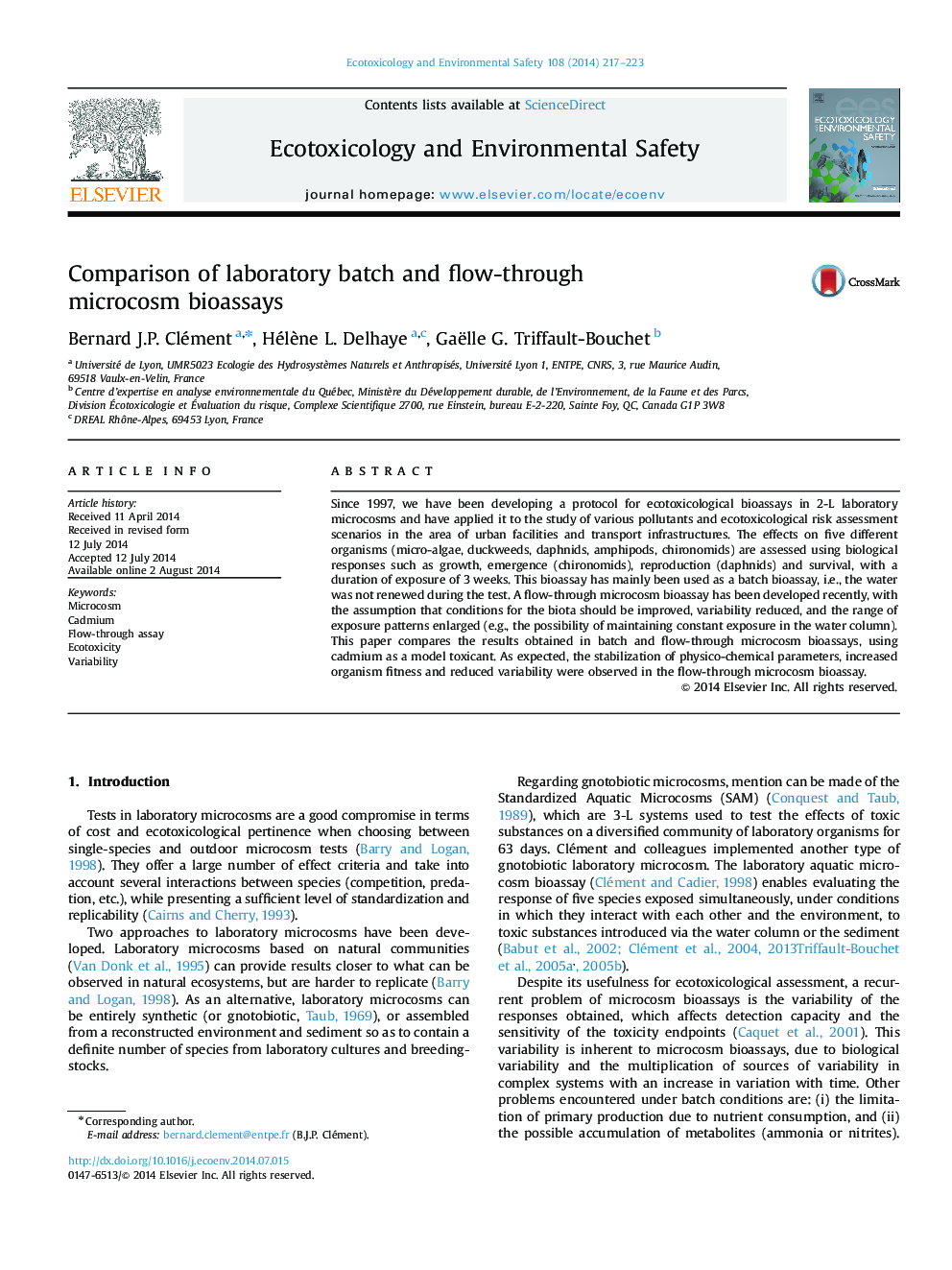| Article ID | Journal | Published Year | Pages | File Type |
|---|---|---|---|---|
| 4420087 | Ecotoxicology and Environmental Safety | 2014 | 7 Pages |
Since 1997, we have been developing a protocol for ecotoxicological bioassays in 2-L laboratory microcosms and have applied it to the study of various pollutants and ecotoxicological risk assessment scenarios in the area of urban facilities and transport infrastructures. The effects on five different organisms (micro-algae, duckweeds, daphnids, amphipods, chironomids) are assessed using biological responses such as growth, emergence (chironomids), reproduction (daphnids) and survival, with a duration of exposure of 3 weeks. This bioassay has mainly been used as a batch bioassay, i.e., the water was not renewed during the test. A flow-through microcosm bioassay has been developed recently, with the assumption that conditions for the biota should be improved, variability reduced, and the range of exposure patterns enlarged (e.g., the possibility of maintaining constant exposure in the water column). This paper compares the results obtained in batch and flow-through microcosm bioassays, using cadmium as a model toxicant. As expected, the stabilization of physico-chemical parameters, increased organism fitness and reduced variability were observed in the flow-through microcosm bioassay.
